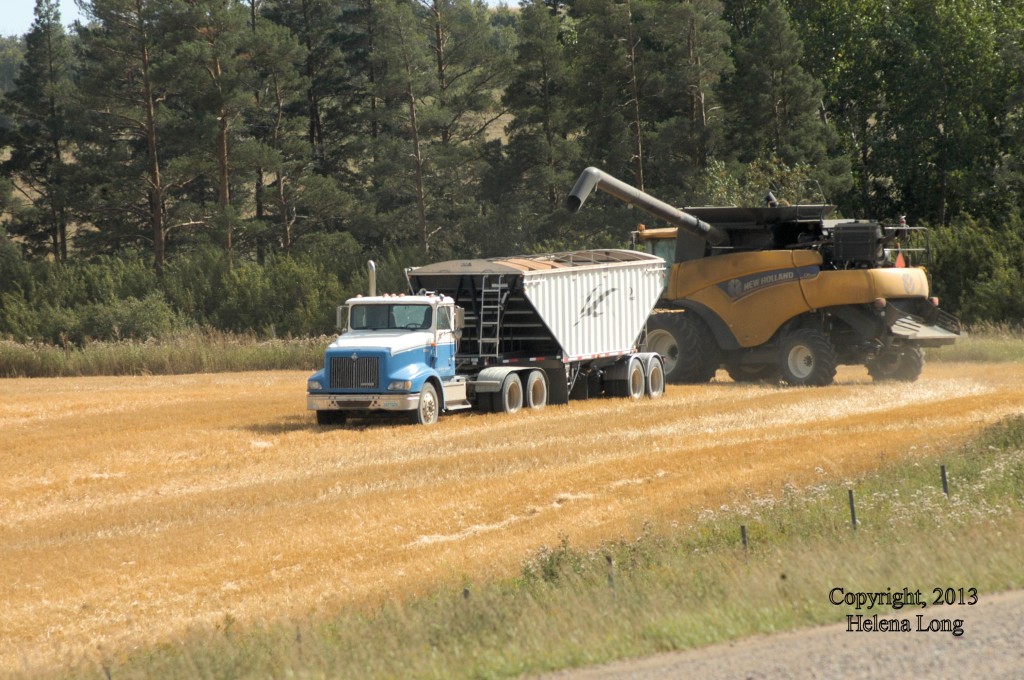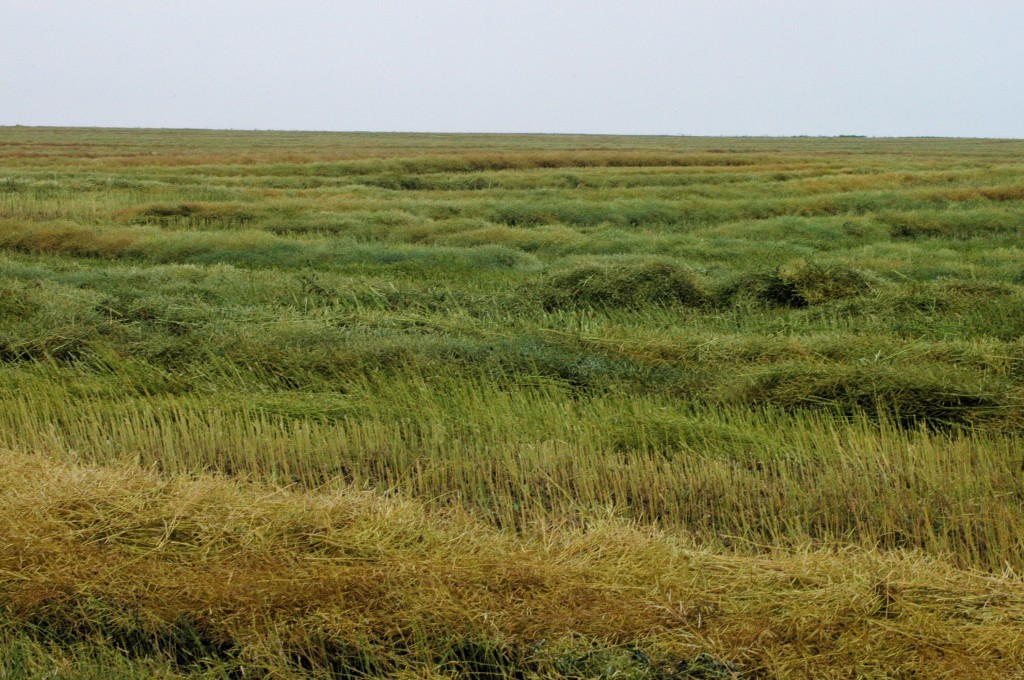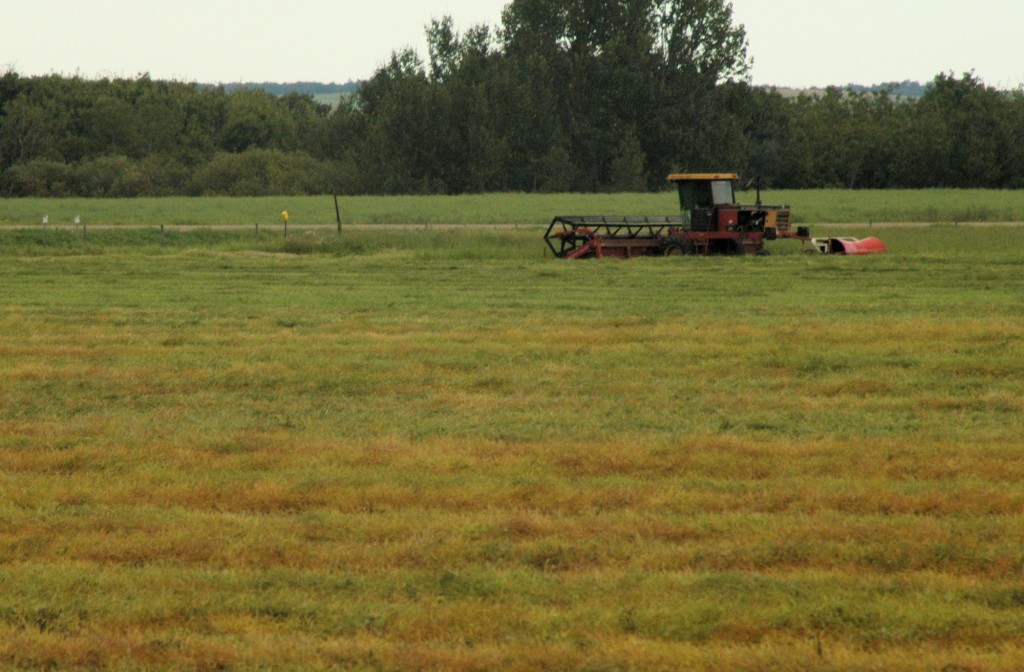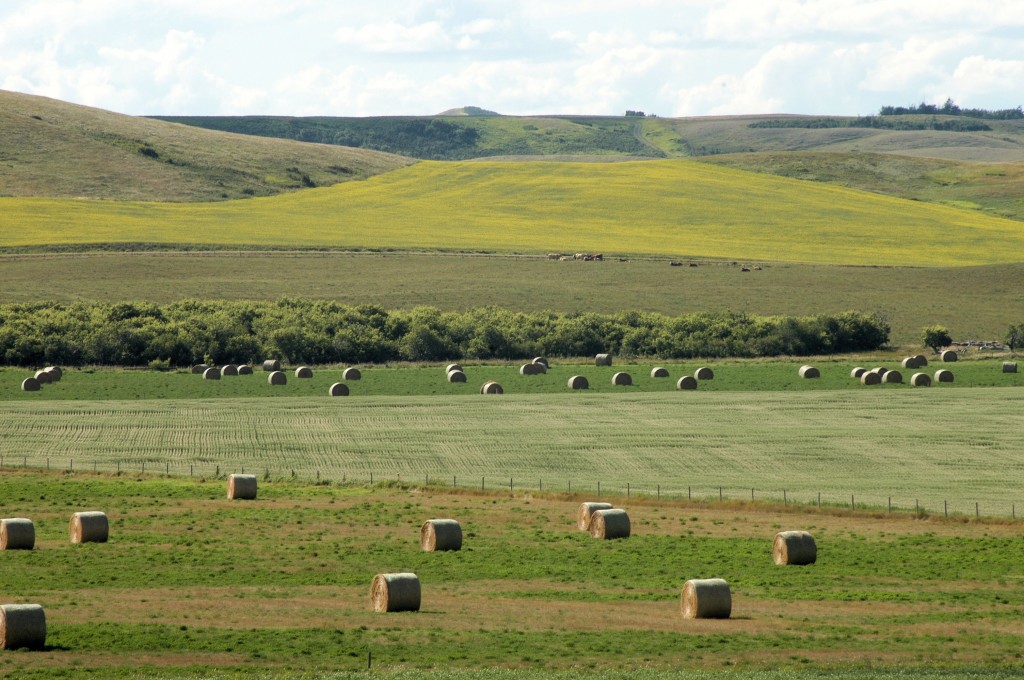SASK. AG CROP REPORT FOR THE PERIOD SEPTEMBER 17 TO 23, 2013
Harvest is progressing well despite recent rains in many areas of the province. Saskatchewan farmers now have 71 per cent of the 2013 crop combined, according to Saskatchewan Agriculture’s Weekly Crop Report. Twenty-one per cent is swathed or ready to straight-cut. The five-year average (2008-2012) for this time of year is 60 per cent combined and 23 per cent swathed or ready to straight-cut.
Harvest progress is most advanced in the west-central region, with 86 per cent of the crop combined. Sixty-two per cent is combined in the southeast; 79 per cent in the southwest; 60 per cent in the east-central region; 68 per cent in the northeast and 73 per cent in the northwest.
Of the crop that has been harvested, average to above-average yields are being reported in most areas; however, they vary from region to region. Spring wheat average yields are reported as 46 bushels per acre, durum 44 bushels per acre, barley 68 bushels per acre, canola 38 bushels per acre, and peas 43 bushels per acre.

If you look carefully, you can see a double rainbow in the sky above this harvested field. Taken September 23, 2013 in West Central Saskatchewan
West-Central Saskatchewan (Crop Districts 6B – Hanley, Outlook, Loreburn, Saskatoon and Arelee areas; Crop District 7 – Rosetown, Kindersley, Eston, Major, Kerrobert, Macklin, Wilkie and Biggar areas)
The west-central region is the most advanced area of the province with 86 per cent of the crop combined and 10 per cent swathed or ready to straight cut. The five year average (2008-2012) for this time of year is 56 per cent combined. Crop district 7A has 91 per cent combined, 6B 83 per cent combined and 7B has 84 per cent of the crop combined. Little to no rain was received last week, helping farmers stay in the field.
Estimated yield ranges for the region are reported as follows: winter wheat 30 to 50 bu/ac, spring wheat 30 to 60 bu/ac, durum 37 to 60 bu/ac, oats 65 to 100 bu/ac, barley 50 to 80 bu/ac, fall rye 30 to 40 bu/ac, flax 25 to 35 bu/ac, canola 30 to 48 bu/ac, mustard 1000 to 2000 lb./ac, lentils 1200 to 2400 lb./ac, peas 30 to 60 bu/ac and canary seed 750 to 1500 lb./ac. Overall, quality is good and many farmers are expecting to wrap up harvest in the next week or two.
Topsoil moisture conditions continue to deteriorate and are rated as 13 per cent adequate, 49 per cent short and 38 per cent very short on cropland. Hay land and pasture topsoil moisture conditions are rated as 14 per cent adequate, 44 per cent short and 42 per cent very short. The region has not received significant rainfall in over a month and all crop districts are reporting that almost half of acres are short of topsoil moisture.
Crop and combine fires have been reported in many areas.
Producers are busy finishing harvest operations, working fields and starting fall weed control.








